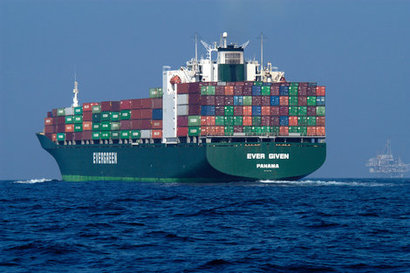
Global trade would halt without maritime shipping, as an estimated 80% of all cargo is transported by sea. Although this mode of transportation is responsible for a significant portion of global greenhouse gas emissions, it is an irreplaceable aspect of the world economy. Since no feasible alternatives exist, decarbonization is vital.
The industry has welcomed the concept of net zero, as leaders don’t see fossil fuels as part of the future of shipping. In an age of high freight rates and limited yard space, cost savings and emission reductions associated with renewables and biofuels may be more beneficial. However, despite bold decarbonization plans, the overwhelming majority of vessels still rely on fossil fuels. So far, collective interventions have amounted to a drop in the ocean.
According to the United Nations Trade and Development, the industry’s emissions have risen by 20% over the last decade. If left unaddressed, they could exceed 130% of their 2008 levels by 2050. This increase aligns with global maritime trade, which experts expect to continue growing. Luckily, the IMO plans to intervene.
Under the remit of the IMO, the Marine Environment Protection Committee approved a new fuel standard and emissions pricing mechanism during its 83rd session in April. They will become mandatory for ocean-going vessels over 5,000 gross tonnage as part of Annex VI, covering 97% of the world’s merchant shipping fleet by tonnage.
The new framework is the first to limit emissions and establish GHG pricing industrywide. It will be formally adopted in October 2025 before becoming legally binding and effective sometime in 2027. With this change, the IMO aims to achieve the climate targets it established in its 2023 strategy on the reduction of emissions, helping the sector achieve net zero by or close to 2050.
Even though carbon emissions have risen substantially over the last decade, there is still hope for the sector to achieve net zero by 2050. The goal is ambitious but possible. As long as the IMO maintains its enforcement mechanisms, this regulatory framework should be enough to incentivize ship owners to take action.
Transitioning from fossil fuels is the most straightforward approach to net zero. The process will involve retrofitting engines for carbon-neutral fuel, leveraging renewables and systematically improving electric prototypes — all of which require substantial investments.
The Candela P-12 is the world’s first long-range electric hydrofoil ferry. Its lifetime carbon emissions are over 97% lower than those of legacy diesel vessels, demonstrating the superiority of battery power. Despite being exceptionally more sustainable, its operating costs are up to 50% lower, and its rate of travel is twice as fast. However, the initial investment is steep.
While dual-fuel and electric alternatives show promise, replacing fleets is costly. It may not even be sustainable since prematurely replacing ships that would have lasted decades longer is wasteful. Moreover, electrification isn’t feasible for deep-sea shipping. Even without these constraints, disproportionate supply and demand will be an issue.
Without supply constraints, the global shipping industry’s biodiesel demand could surpass 140 million tons of fuel oil equivalent by 2028. However, even under ideal circumstances, experts expect total production capacity to peak at 120 million tons. Factoring in sustainability criteria that prioritize cleaner, second-generation biofuels, the supply drops to 40 million tons.
Understandably, stakeholders will be reluctant to invest millions into net-zero projects when the fundamentals are uncertain. Industry professionals must collaborate to make the process as seamless as possible. They can start by improving the availability of clean fuels, biofuels and renewable-powered batteries.
Diversification can alleviate supply issues while keeping costs reasonable. Since electrification is practical for short-sea shipping, service providers and ship owners should focus on wind and solar power to further lessen supply constraints. A renewed focus on research and development could make investments more affordable, supporting the energy transition.
Heightened visibility into Scope 1, 2 and 3 emissions is the cornerstone of any approach. Digital solutions that enable precise monitoring would support energy efficiency and carbon capture interventions, mitigating GHG generation until carbon-neutral fuels become widely available. Countless software solutions exist, potentially accelerating adoption.
Whichever avenue decision-makers take will come at a cost, which may be difficult to pass along the supply chain. Luckily, research shows more people may be more willing to make sacrifices and absorb expenses than expected, incentivizing corporate commitment.
A 2024 report revealed that 83% will accept delivery delays when incentivized, while 47% will pay more for environmentally friendly shipping options. It suggests people are more forgiving when sustainability is involved. Explaining the estimated GHG emission reductions for specific shipping options could break them from their same-day delivery expectations.
Decarbonization will require an overhaul of renewable systems to support the transition from fossil fuels. Ingenuity is essential, but professionals must balance environmental goals with economic needs to keep from rocking the boat. Maintaining delivery timelines and vessel efficiency is necessary for stakeholder buy-in, which helps drive results.
Although making the maritime shipping industry net zero by 2050 will take tremendous effort and significant investments, the cost of inaction is far greater. Terminal operators, public energy agencies and ship owners should collaborate to ensure progress.

